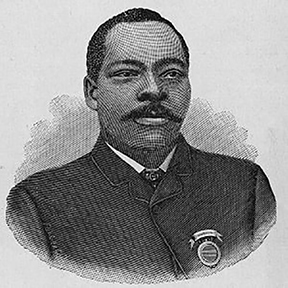
A Black History Note
The works of the incomparable Granville T. Woods give us several reasons to celebrate Black History Month with an abundance of pride. When Carter G. Woodson first created Negro History Week, now known as Black History Month, he spoke about the extraordinary contributions by Black inventors like Granville T. Woods that we all can enjoy. Yet, at the same time, many try ignoring the brilliance and bravery of Black inventors. Although Woods would constantly endure extreme racism, he would still overcome various obstacles and invent things from the light dimmer to the roller coaster. Additionally, his improvement to egg incubators allowed farmers to incubate up to 50,000 eggs at a time. This breakthrough provided a more efficient method of incubation for chicken farmers that greatly enhanced their ability to help people put food on the dinner table.
Granville T. Woods was so successful that some would even refer to Thomas Edison as “The White Granville T. Woods.” He dedicated his life’s work to developing groundbreaking and life changing technology. In the railroad industry alone, Woods had invented 15 appliances for electric railways and received nearly 60 patents.
This master inventor was born on April 23, 1856, in Columbus, Ohio, to Tailer and Martha Woods. He and his parents were free due to the Northwest Ordinance of 1787, which prohibited enslavement from the territory that included what would become the state of Ohio.
Woods held various positions in his early teens, including working as an engineer in a railroad machine shop, on a British ship, in a steel mill, and as a railroad worker.
While working, Woods took courses in engineering and electronics, realizing that education was essential to developing the skills he would need to express his creativity with machinery. Some reports say he had up to two years of college course training in either electrical or mechanical engineering or both, possibly at an east coast college from 1876 to 1878.
In 1872, Woods obtained a job as a fireman on the Danville and Southern railroad in Missouri, eventually he moved to Springfield, Illinois, two years later and worked in a rolling mill. Four years later, Woods took a job aboard the British steamer Ironsides. Ultimately, he became its chief engineer.
His travels and experiences finally led him to settle in Cincinnati, Ohio, where he modernized the railroad and its equipment. His most noted invention at this point was a system for letting a train engineer know how close his train was to others, which drastically helped reduce collisions. He also developed a system for overhead electric conducting lines for railroads, which aided in developing overhead railroad systems in cities such as Chicago, St. Louis, and New York.
Woods eventually set up his own business, the Woods Electrical Co., in Cincinnati to develop, manufacture, and sell the electrical apparatus. In his early 30s, he became interested in thermal power and steam-driven engines. He filed his first patent for an improved steam boiler furnace in 1889.
He also developed the Synchronous Multiplex Railway Telegraph, which allowed communications between train stations and moving trains. This made it possible for trains to communicate with stations and other trains, so everyone knew exactly where the trains were always.
Another one of Granville T. Woods’ inventions, for an automatic air brake, was patented in 1902. His other inventions were an automatic air brake used to slow or stop trains and the electric car powered by overhead wires. It used a third rail system to keep the cars running correctly. Some cities subways are powered by the third rail which power the subway cars.
Telephone inventor Alexander Graham Bell’s company, American Bell Telephone Co., purchased the rights to Woods’ patent on an apparatus that combined a telephone and a telegraph. The device, which Woods called “telegraphony,” allowed a telegraph station to send voice and telegraph messages over a single wire. Proceeds from the sale gave Woods the luxury of being a full-time inventor.
As Granville T. Woods would become more successful, he would have to deal with lawsuits. Thomas Edison would sue Woods for his inventions on two occasions, hoping to steal what Woods had created. Woods eventually won the court battles, but Edison didn’t give up easily when he wanted something. Trying to win over Woods and his inventions, Edison offered Woods a prominent position in the engineering department of Edison Electric Light Co. in New York. Woods declined, preferring to maintain his independence.
Early in his career, during the summer of 1881, Woods contracted smallpox, a major health threat in the United States in its last years. The often-fatal illness sidelined Woods for nearly a year and left him with chronic kidney and liver disease that might



Be the first to comment